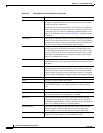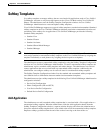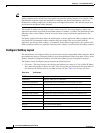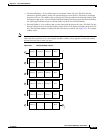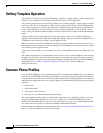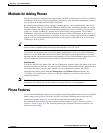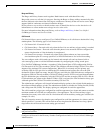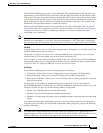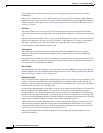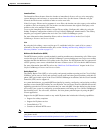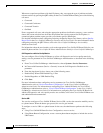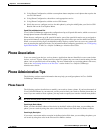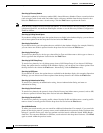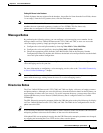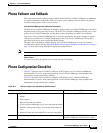
43-24
Cisco Unified CallManager System Guide
OL-14153-01
Chapter 43 Cisco Unified IP Phones
Phone Features
You configure the call pickup feature when you are configuring phone features in Cisco Unified
CallManager.
When you are adding a line, you can indicate the call pickup group. The call pickup group indicates a
number that can be dialed to answer calls to this directory number (in the specified partition). For more
information about call pickup, refer to Call Pickup Group in the Cisco Unified CallManager Features
and Services Guide.
Call Select
The Select softkey allows a user to select a call for feature activation or to lock the call from other
devices that share the same line appearance. Pressing the Select softkey on a selected call deselects the
call.
When the call gets selected by a device, it gets put in the Remote-In-Use state on all other devices that
share the line appearance. No one can select a call that is in the Remote-In-Use state. In other words,
selecting a call instance will lock it from other devices that share the same line appearance.
A special display symbol identifies selected calls.
Conference List
The conference list feature provides a list of participant directory numbers that are in an ad hoc
conference. The name of the participant displays if it is configured in Cisco Unified CallManager
Administration.
Any participant can invoke the conference list feature on the phone and can view the participants. The
conference controller can invoke the conference list feature and can view and remove any participant in
the conference by using the Remove softkey.
Direct Transfer
Using the DirTrfr and Select softkeys, a user can transfer any two established calls to remove the calls
from the IP phone. For more information about Direct Transfer, see the “Making and Receiving Multiple
Calls Per Directory Number” section on page 18-7.
Onhook Call Transfer
The Call Transfer feature supports the onhook (hangup) action as a possible last step to complete a call
transfer. You must set the Transfer On-hook Enabled service parameter, which enables onhook call
transfer, to True for onhook call transfer to succeed. If the service parameter is set to False, the onhook
action ends the secondary call to the third party.
In the existing implementation, if user B has an active call on a particular line (from user A) and user B
has not reached the maximum number of calls on this line, the Cisco Unified IP Phone provides a
Transfer softkey to user B. If user B presses the Transfer softkey (or Transfer button, if available) once,
user B receives dial tone and can make a secondary call: user B dials the number of a third-party (user
C). Cisco Unified CallManager provides a Transfer softkey to user B again. If user B presses the Transfer
softkey again (or Transfer button, if available), the transfer operation completes.
With the onhook call transfer implementation, user B can hang up after dialing the number of user C,
and the transfer completes. Both the existing and new implementations work in the case of a blind
transfer (user B disconnects before user C answers) and also in the case of a consult transfer (user B
waits for user C to answer and announces the call from user A).
The previous implementation remains unchanged: user B can press the Transfer softkey twice to
complete the transfer.



